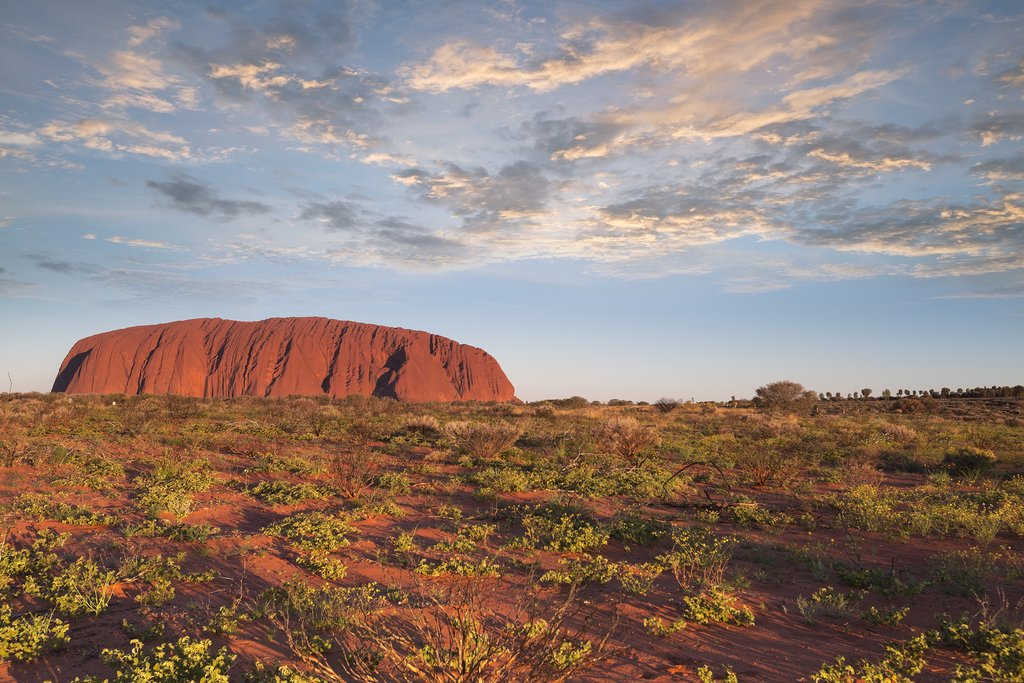Ready for an unforgettable 3-day Uluru tour from Alice Springs? Uluru stands as a colossal monolith in the heart of Australia’s Red Centre, offering visitors a chance to connect with the ancient Anangu culture, witness unparalleled natural beauty, and experience the spiritual pull of this iconic sandstone rock formation. In just three days, you can capture the essence of Uluru, taking in the vibrant hues of sunrise and sunset, exploring the majestic rock formations, and immersing yourself in Aboriginal stories that make this location one of the most awe-inspiring destinations in the world.
Introduction to Uluru: The Heart of the Red Centre

Uluru, also known as Ayers Rock, is a landmark steeped in Aboriginal tradition and natural splendor. Its presence in the Northern Territory of Australia draws innumerable visitors each year, and for good reason. More than just a sight to behold, Uluru represents the living cultural landscape of the Anangu people, who have been its custodians for thousands of years. As a World Heritage site, it offers unique opportunities to learn, reflect, and explore. Your 3-day adventure begins with an insight into the history and spiritual significance of Uluru before delving into the natural wonders that await.
Day 1: Arrival and Immersion in Anangu Culture
Upon your arrival in Uluru, you’ll find a selection of accommodation options to suit your preferences. From luxury resorts to camping sites, you can choose how close to nature you wish to be. Once you are settled in, your journey through Anangu lands begins with an orientation that pays reverence to the traditional owners of this sacred site.
As night falls, prepare for a unique cultural experience under the starry sky. Anangu guides will share stories of the Tjukurpa, the foundational philosophy governing their culture, law, and connection to the land. This immersive experience will set the stage for your following days at Uluru, rooted in an understanding and respect for the land’s deep spiritual significance.
Day 2: Exploring the Natural Wonders of Uluru
Start your day with a breathtaking sunrise that illuminates Uluru in a warm, golden glow. Join a guided walk around the base of the rock, where you’ll witness ancient rock art, serene waterholes, and hear more Anangu tales. This will be a gentle yet profound way to intimately connect with the grandeur of Uluru.
Within walking distance from the base walk, the Mutitjulu Waterhole awaits—a serene oasis rich in biodiversity and storytelling. This significant site is shrouded in legends and an integral part of the local ecosystem. Take a moment here to reflect on the continuity of life in this desert landscape.
Conclude your second day with an enchanting visit to Bruce Munro’s Field of Light installation. As the evening sky darkens, witness thousands of glass spheres gently glow across the desert plain. This harmonious blend of art and nature echoes the spiritual energy of Uluru after sunset.
Day 3: Adventure and Reflection in Kata Tjuta
On your final day, take a short drive to the nearby majestic rock formations of Kata Tjuta. The Valley of the Winds hike offers spectacular views and a deeper appreciation for the natural history of the area. Traversing this landscape not only highlights Uluru’s grandeur but also the lesser-known but equally magnificent domes of Kata Tjuta.
After your morning adventure, visit the cultural centre for an interactive educational experience. Exhibits and presentations provide a deeper understanding of the region’s geology, flora, and fauna, as well as ongoing conservation efforts that are crucial to maintaining the land’s cultural integrity.
As the sun begins to descend on your final evening, find a serene spot to watch the changing colours of Uluru and Kata Tjuta. Reflect on your 3-day journey and the memories you’ve created. This peaceful time encapsulates the transformative power of this sacred place.
Concluding Your 3-Day Uluru Experience
Your 3-day Uluru tour from Alice Springs delivers an unparalleled journey through time, culture, and the stunning Australian outback. From the first rays of sunlight to the shimmering stars above, each moment has offered a unique opportunity to connect with the Earth’s ancient history and the vibrant Anangu culture. As you prepare to leave, carry with you not only images but a profound sense of respect for the traditional custodians of this precious World Heritage site.
FAQs About Visiting Uluru for 3 Days
When is the best time of year to visit Uluru?
The most comfortable times to visit Uluru are during the cooler months of April to September when the temperatures are milder. However, each season offers different experiences, from summer rains that can lead to rare waterfalls to the wildflowers that bloom in spring.
Are there any cultural practices or restrictions I should be aware of when visiting Uluru?
Visitors must respect the Anangu’s wishes and traditions by not climbing Uluru, staying on marked paths, and not photographing certain culturally sensitive areas. Participating in local tours and experiences can enrich your understanding of these practices.
What should I bring for my 3-day trip to Uluru?
Essentials include comfortable walking shoes, sun protection such as a hat and sunscreen, plenty of water, and light yet protective clothing. The desert can get chilly at night, so also pack some warm layers for the evenings.
Is it possible to climb Uluru during my visit?
No, climbing Uluru is permanently closed out of respect for Anangu culture and beliefs. There are many other meaningful ways to experience Uluru without ascending it.
Can I explore Uluru and Kata Tjuta without a guided tour?
While you can explore some areas independently, guided tours offer additional insights into the region’s ecology and Anangu culture. If you decide to explore on your own, it’s important to stay within designated areas to respect the site and ensure your safety.
